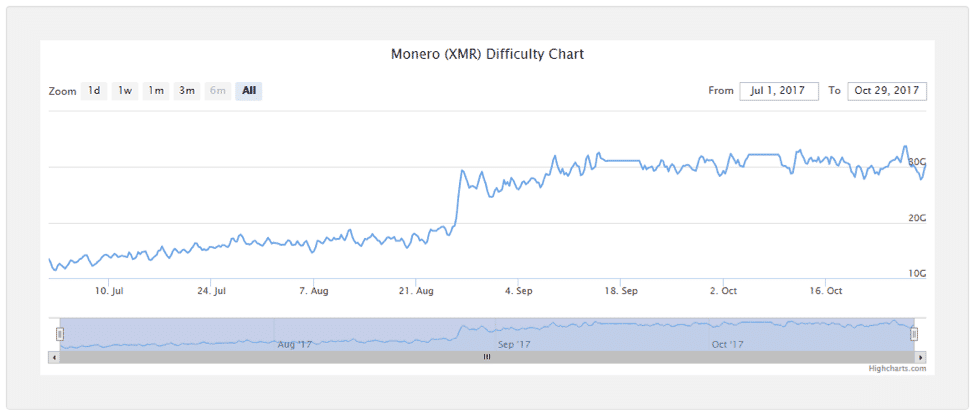How To Calculate Monero XMR Mining Profitability
Multiple global mining servers and daemons for stability. PPLNS payment method for best profit. DDOS Protection reducing downtime. Monitoring of each rig add.workerID to username. Hashrate history easily keep track of your hashrate. Custom Difficulty append +DIFF to address. Direct to exchange mining - all address. Calculate Bytecoin, Monero, FantomCoin, QuazarCoin, DigitalNote, MonetaVerde, Dashcoin, Aeon coin mining profitability. Calculate Bytecoin, Monero, FantomCoin, QuazarCoin, DigitalNote, MonetaVerde, Dashcoin, Aeon coin mining profitability. Mineable Crypto checker for Coin Stats, Profit Calculate, Estimate Earning, Mining Pools, Mining Hardware, Mining Software.
Last updated June 27, 2017 Monero, a fungibility and privacy centered currency, has been gaining significant traction in dark net markets around the globe. Considering that its value has passed the 40$ mark, you might be wondering how to best mine the currency. Here’s a quick guide regarding the hardware that you should use. Best Monero Mining Hardware Monero does not have any ASIC mining hardware, so you’re left with the option of mining with CPUs and GPUs. More specifically, Monero’s mining algorithm makes use of a type of Proof of Work (PoW) called CryptoNight, which was designed to be effective for the computer hardware of casual users. What’s special about Monero’s mining algorithm is that it lowers the performance gap. As a result, the efficiency gap between using GPUs and CPUs to mine is low relative to other cryptocurrencies.

This causes ASICs to be prohibitively expensive for mining Monero, and therefore creates an arguably fairer playing field. To get the most bang out of your Monero mining buck, you’ll be best off buying as many cheap CPUs as possible.
Keep in mind that you could also reach better margins by investing in fewer, but stronger CPUs that have a better hash to power consumption ratio. Here are some CPUs to consider: However, it’s hard to stack a bunch of CPUs together, so if you calculate your costs diligently, you could be better off with a set of affordable GPUs: And if you’re really trying to accrue some meaningful hashing power, take a look at custom assembled. Essentially, you’re best off stacking many affordable GPUs instead of spending large amounts on newer cutting edge cards, as GPU innovations charge extra for chip features that just hit the market. If you’re looking for an extensive, follow the link to feast on all the options. Monero Mining Pools It helps to participate in a mining pool to secure steadier rewards for your mining efforts. There are several options to pursue, as seen on, but here are some better known pools to try out: Note that some of the pools above mine for other cryptocurrencies as well.
Also, make sure to stay updated as to the different pool fees so that you don’t fall behind your margins. Some pools have unexpectedly changed their terms and conditions in the past, so be vigilant for updates and change pools when needed. Monero Mining Algorithm Monero uses CryptoNight as its Proof of Work mining algorithm.
CryptoNight comes with a few features that are worth keeping in mind. Most notably, CryptoNight is particularly memory intensive. This is an alleged consequence of the decrease in the advantage that GPU mining brings over CPU mining compared to other Proof of Work algorithms. As a result, Cryptonight benefits the casual miner by reducing the payoff received from specialized hardware, which makes GPUs prohibitively expensive in many cases.
By using a scratchpad with a 2MB memory size (tuned to Intel CPU L3 Cache), GPUs and ASICs are forced out of the equation by making the hash inefficient to compute with low memory architecture. Monero Mining Profitability It’s important to note that there are free online. To be prudent, estimate your hash-rate, power consumption and electricity costs before committing to a significant hardware investment. After all, you don’t want to be stuck with equipment that will be operating at a loss. It helps to gauge values between multiple mining profitability calculators. Some of the ones worth noting are: Mining Other CryptoNight Coins CryptoNight is the underlying PoW algorithm that powers the confirmations on the Monero network. Other than Monero, Bytecoin is the main other contender that uses CryptoNight for PoW consensus.
So it’s safe to say that the hardware that you buy for Monero mining can also be used to mine Bytecoin effectively if you choose to do so. Keep in mind, there are several other lesser known altcoins that make use of CryptoNight as well.
So your options aren’t limited to just Monero and Bytecoin. These include, and are not limited to: Ducknote, Fantomcoin, Moneta Verde and QuazarCoin. Either way, Monero is worth up to two orders of magnitude than any of these other coins, and brings more functionality to the table. Vertcoin VTC Mining Hardware Comparison. HTMLCOIN HTML Mining Pool Server. The choice is up to you, but the decision should be clear.
Estimated Expected Cryptocurrency Earnings The estimated expected cryptocurrency earnings are based on a statistical calculation using the values entered and do not account for difficulty and exchange rate fluctuations, stale/reject/orphan rates, and a pool's efficiency. If you are mining using a pool, the estimated expected cryptocurrency earnings can vary greatly depending on the pool's efficiency, stale/reject/orphan rate, and fees. If you are mining solo, the estimated expected cryptocurrency earnings can vary greatly depending on your luck and stale/reject/orphan rate. Time Frame XMR Coins BTC (XMR/BTC at 0.02647507) USD (BTC at $8,439.50) Power Cost (in USD) Pool Fees (in USD) Profit (in USD) Hourly 0.00056078 0.00001485 $0.13 $0.06 $0.00 $0.07 Daily 0.01345883 0.00035632 $3.01 $1.44 $0.00 $1.57 Weekly 0.09421178 0.00249426 $21.05 $10.08 $0.00 $10.97 Monthly 0.40376478 0.01068970 $90.22 $43.20 $0.00 $47.02 Annually 4.91247153 0.13005803 $1,097.62 $525.60 $0.00 $572.02.